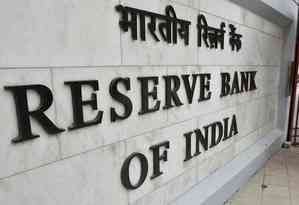RBI defers rollout of LCR norms by a year in big relief to banks
In a big relief for banks, RBI Governor Sanjay Malhotra announced on Friday that the implementation of the proposed Liquidity Coverage Ratio (LCR), as well as project financing norms, will be deferred by a year and will not be implemented before March 31, 2026.

Mumbai, Feb 7 (IANS) In a big relief for banks, RBI Governor Sanjay Malhotra announced on Friday that the implementation of the proposed Liquidity Coverage Ratio (LCR), as well as project financing norms, will be deferred by a year and will not be implemented before March 31, 2026.
He said that the step has been taken as the earlier deadline of March 2025 does not give sufficient time for the implementation of these guidelines. The RBI does not want to cause a disruption in the financial system and will ensure a smooth transition, he added.
Both public sector and private sector banks had opposed the implementation of these norms, announced by then RBI Governor Shaktikanta Das, as they feared they would cause a liquidity crisis in the financial system. The heads of banks had raised the issue with Malhotra, shortly after he took over as RBI Governor with Das’s tenure coming to an end.
These norms were earlier scheduled to come into effect on April 1, 2025. According to treasury officials of banks, implementing the LCR norms would, in effect, mean over Rs 4 lakh crore would have to be diverted from banks to buy government bonds instead of extending credit to corporates and individuals to boost demand in the economy and spur growth.
The Reserve Bank of India had got in touch with banks in the last week of January to understand the impact of its new liquidity coverage norms following concerns that the move would adversely impact the flow of credit in the economy.
Banks had asked for deferment of the norms and alternative mechanisms to cope with the likely hit that their operations would take.
They were worried as they were facing a tight liquidity situation despite the daily variable repo rate auctions that the RBI started carrying out to inject more money into the system.
The RBI had on July 25 issued a draft circular which required banks to set aside more funds to cover their risks from April 1 this year.
The central bank said banking has undergone rapid transformation in recent years. While increased usage of technology has facilitated the ability to make instantaneous bank transfers and withdrawals, it has also led to a concomitant increase in risks, requiring proactive management and, thus, the RBI had reviewed the Liquidity Coverage Ratio (LCR) framework to increase the resilience of banks.
Banks were directed to assign an additional 5 per cent funds as a run-off factor for retail deposits which are enabled with internet and mobile banking facilities (IMB). Stable retail deposits enabled with IMB shall have a 10 per cent run-off factor and less stable deposits enabled with IMB shall have a 15 per cent run-off factor.
LCR requires banks to maintain sufficient high-quality liquid assets (HQLAs), comprising mainly government securities, to manage a potential liquidity crunch due to any sudden withdrawals of funds. The RBI had rejected the request of banks to include their existing cash reserve ratios to estimate HQLAs.
Banks had also sounded the Finance Ministry on the need for easing the stringent RBI guidelines which would have hit credit growth.
--IANS
sps/vd


 IANS
IANS 








